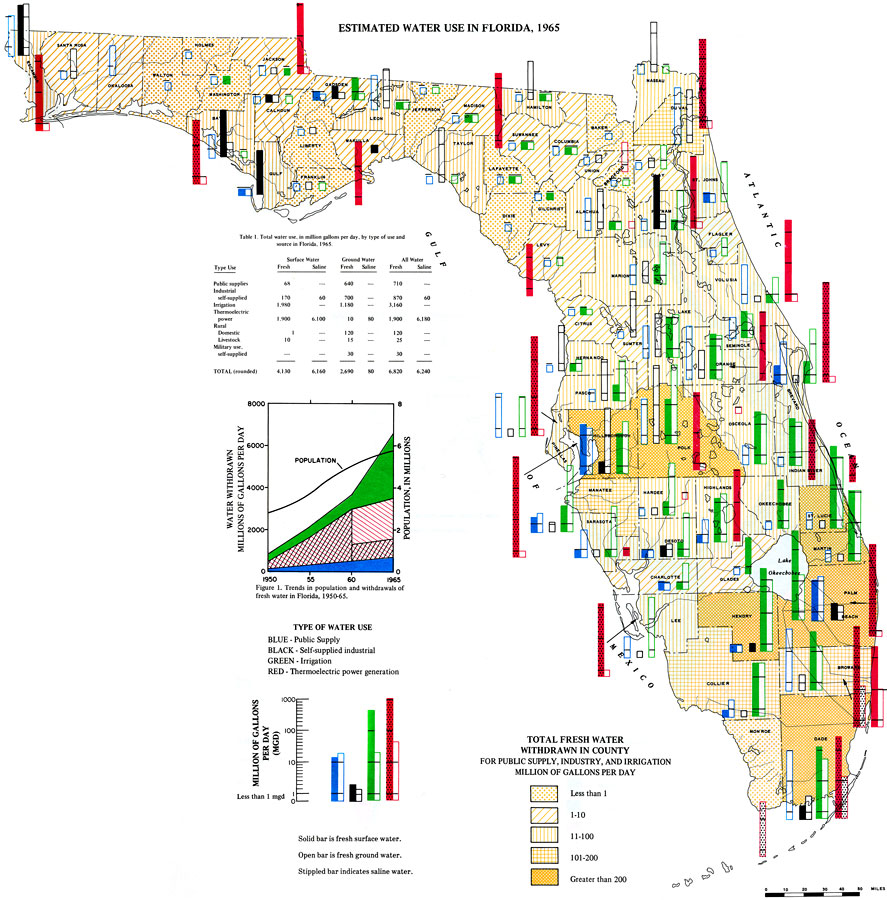Florida's Water Usage

Resource: Estimated Water Use in Florida, 1975
ACTIVITY
Starting with the water usage map from 1975, the teacher can provide a current map of water levels and guide students through comparison of the two maps. Determine if there is a percentage increase and compare population data from that time. Make a prediction for what the water use will be in 40 years. Create a powerpoint presentation describing the historical information and the predictions. Combine with water conservation tips and strategies and have the students present it to the school/parents' night, etc.
Standards this activity addresses:
- Grades 9-12 (1996 Standards)
- Strand D - Processes that Shape the Earth
- 1. The student recognizes that processes in the lithosphere, atmosphere, hydrosphere and biosphere, interact to shape the Earth. (SC.D.1.4) BM 1,3
- 2. The student understands the need for protection of the natural systems on Earth. (SC.D.2.4) BM 1
- Strand G - How Living Things Interact With Their Environment
- 2. The student understands the consequences of using limited natural resources. (SC.G.2.4) BM 5,6
- Strand H - The Nature of Science
- 1. The student uses the scientific processes and habits of mind to solve problems. (SC.H.1.4) BM 1, 2, 3, 4, 7
- 3. The student understands that science, technology and society are interwoven and interdependent. (SC.H.3.4) BM 1-6
- Grades 9-12 (2008 Standards)
- Body of Knowledge:
- Nature of Science
- Standard 1 - The Practice of Science SC.912.N.1.1 - N.1.7
- Standard 2 - The Characteristics of Scientific Knowledge SC.912.N.2.5
- Standard 3 - The Role of Theories, Laws, Hypotheses, and Models SC.912.N.3.1 - N.3.5
- Standard 4 - Science and Society SC.912.N.4.1, N.4.2
- Earth and Space Science
- Standard 6 - Earth Structures SC.912.E.6.2, E.6.4, E.6.6
- Standard 7 - Earth Systems and Patterns SC.912.E.7.8
- Life Science
- Standard 17 - Interdependence SC.912.L.17.4, L.17.7, L.17.11, L.17.12, L.17.13, L.17.14, L.17.16, L.17.17, L.17.18, L.17.19,L.17.20